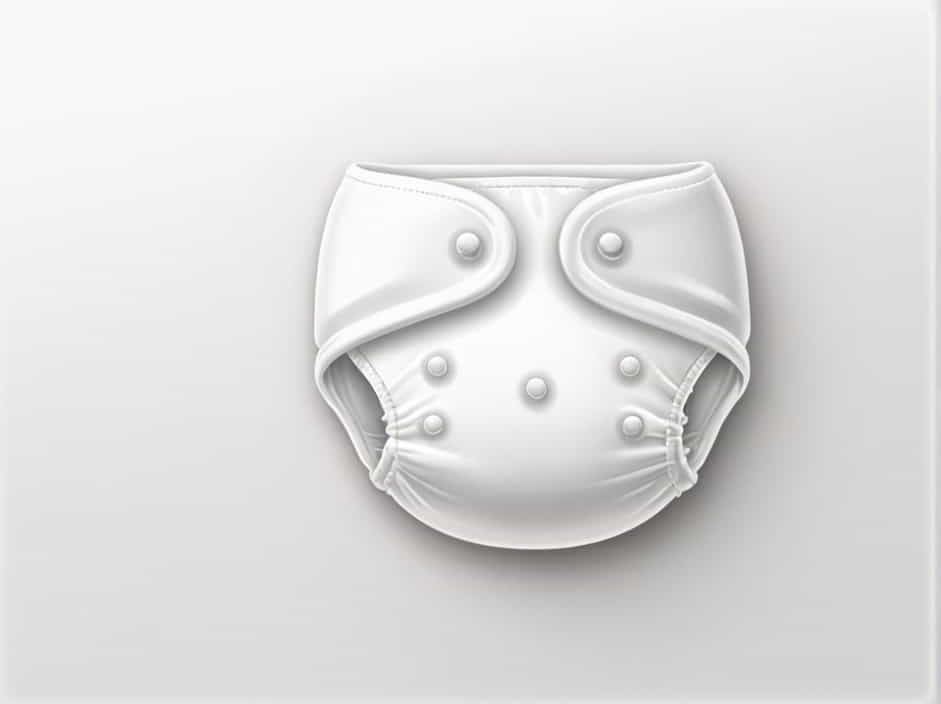One of the biggest concerns for new parents is whether their newborn is getting enough milk. Since babies cannot tell us when they are hydrated or well-fed, one of the best ways to monitor their health is by tracking wet diapers.
Understanding how many wet diapers a newborn should have per day can give you confidence that your baby is eating enough and staying hydrated. Below, we’ll break down what to expect in the first few days, weeks, and months of your baby’s life.
Why Are Wet Diapers Important for Newborns?
Wet diapers are a key indicator of hydration and feeding success. Babies who produce enough urine are usually well-fed, while a lack of wet diapers may signal dehydration or feeding difficulties.
Urine output helps doctors and parents assess:
- Proper milk intake (breast milk or formula)
- Hydration levels
- Normal kidney function
- Signs of illness or dehydration
If your baby is not having enough wet diapers, consult your pediatrician to rule out any feeding or health concerns.
How Many Wet Diapers Should a Newborn Have?
Day 1: The First 24 Hours
- Expect at least one wet diaper within the first 24 hours.
- Newborns produce very little urine on their first day.
- The urine may appear dark or slightly orange due to urate crystals, which is normal.
Day 2: Increasing Output
- Your baby should have at least 2 wet diapers on the second day.
- Urine may still be dark but should start becoming lighter.
Day 3-4: More Frequent Urination
- Expect 3 to 4 wet diapers per day as milk supply increases.
- Urine should now be lighter in color and more diluted.
Day 5-6: Transition to Normal Output
- By day 5, babies should have at least 5-6 wet diapers per day.
- The urine should be pale yellow, indicating proper hydration.
- Breastfeeding parents should see signs that their milk supply has come in.
Day 7 and Beyond: The Normal Pattern
- From one week old onward, newborns should have at least 6-8 wet diapers per day.
- Wet diapers should feel heavy and full.
- If using disposable diapers, the indicator strip may turn blue.
For formula-fed babies, urine output may be slightly higher than for breastfed babies because formula contains more fluid volume per feeding.
How to Tell if a Diaper Is Wet
Since modern disposable diapers are highly absorbent, it can sometimes be tricky to tell if a diaper is wet. Here’s how to check:
- Feel the diaper – A wet diaper will feel heavier and slightly swollen.
- Use a tissue trick – Place a tissue inside the diaper and check if it becomes damp.
- Check for color changes – Many brands have a wetness indicator that changes color when wet.
- Observe baby’s behavior – A fussy baby may need a diaper change even if you can’t immediately tell it’s wet.
What If My Baby Has Fewer Wet Diapers?
If your baby is not having enough wet diapers, it may indicate:
- Dehydration – Less urine output can mean your baby isn’t getting enough fluids.
- Latching or feeding issues – If breastfeeding, poor latch or low milk supply may affect intake.
- Illness or infection – Some medical conditions can reduce urine output.
Signs of Dehydration in Newborns
Contact your doctor immediately if your baby has:
- Fewer than 6 wet diapers per day after day 5
- Dark, strong-smelling urine
- Dry mouth or cracked lips
- Lethargy or irritability
- Sunken soft spot (fontanelle) on the head
Dehydration can be serious in newborns, so always seek medical advice if you’re concerned.
Wet Diaper Chart for Tracking
Many parents find it helpful to track wet diapers in the first few weeks. Here’s a simple guide:
| Baby’s Age | Minimum Wet Diapers Per Day | Urine Color |
|---|---|---|
| Day 1 | 1 | Dark, may have urate crystals |
| Day 2 | 2 | Dark, beginning to lighten |
| Day 3 | 3-4 | Lighter yellow |
| Day 4 | 4-5 | Pale yellow |
| Day 5+ | 6-8+ | Clear to pale yellow |
You can use a notebook, an app, or a simple checklist to keep track of your baby’s wet diapers.
How Feeding Affects Wet Diapers
Breastfed Babies
- May have fewer wet diapers in the first few days as milk comes in.
- Once breastfeeding is established, expect at least 6-8 wet diapers daily.
- Frequent feeding = frequent urination.
Formula-Fed Babies
- Typically have more wet diapers than breastfed babies.
- Formula provides consistent hydration, leading to heavier diapers.
- Urine output should be steady and pale yellow.
Regardless of feeding method, the key is consistent urination after the first few days.
Should I Worry About Too Many Wet Diapers?
While too few wet diapers is a problem, too many wet diapers is usually not. Some babies urinate more frequently than others, and this is generally normal.
However, if your baby is producing excessively wet diapers and seems overly thirsty, consult a doctor to rule out diabetes insipidus or other medical conditions.
Tracking your newborn’s wet diapers is an easy and effective way to ensure they are getting enough breast milk or formula. In the first week, wet diaper counts will gradually increase from 1 to 6-8 per day. By paying attention to urine color, consistency, and frequency, parents can monitor their baby’s hydration and overall health.
If you notice fewer than 6 wet diapers per day after the first week, or signs of dehydration, consult a pediatrician immediately.
